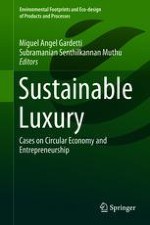2019 | OriginalPaper | Buchkapitel
Cradle to Cradle®—Parquet for Generations: Respect Natural Resources and Offers Preservation for the Future
verfasst von : Ansgar Igelbrink, Albin Kälin, Marko Krajner, Roman Kunič
Erschienen in: Sustainable Luxury
Verlag: Springer Singapore
Aktivieren Sie unsere intelligente Suche, um passende Fachinhalte oder Patente zu finden.
Wählen Sie Textabschnitte aus um mit Künstlicher Intelligenz passenden Patente zu finden. powered by
Markieren Sie Textabschnitte, um KI-gestützt weitere passende Inhalte zu finden. powered by
